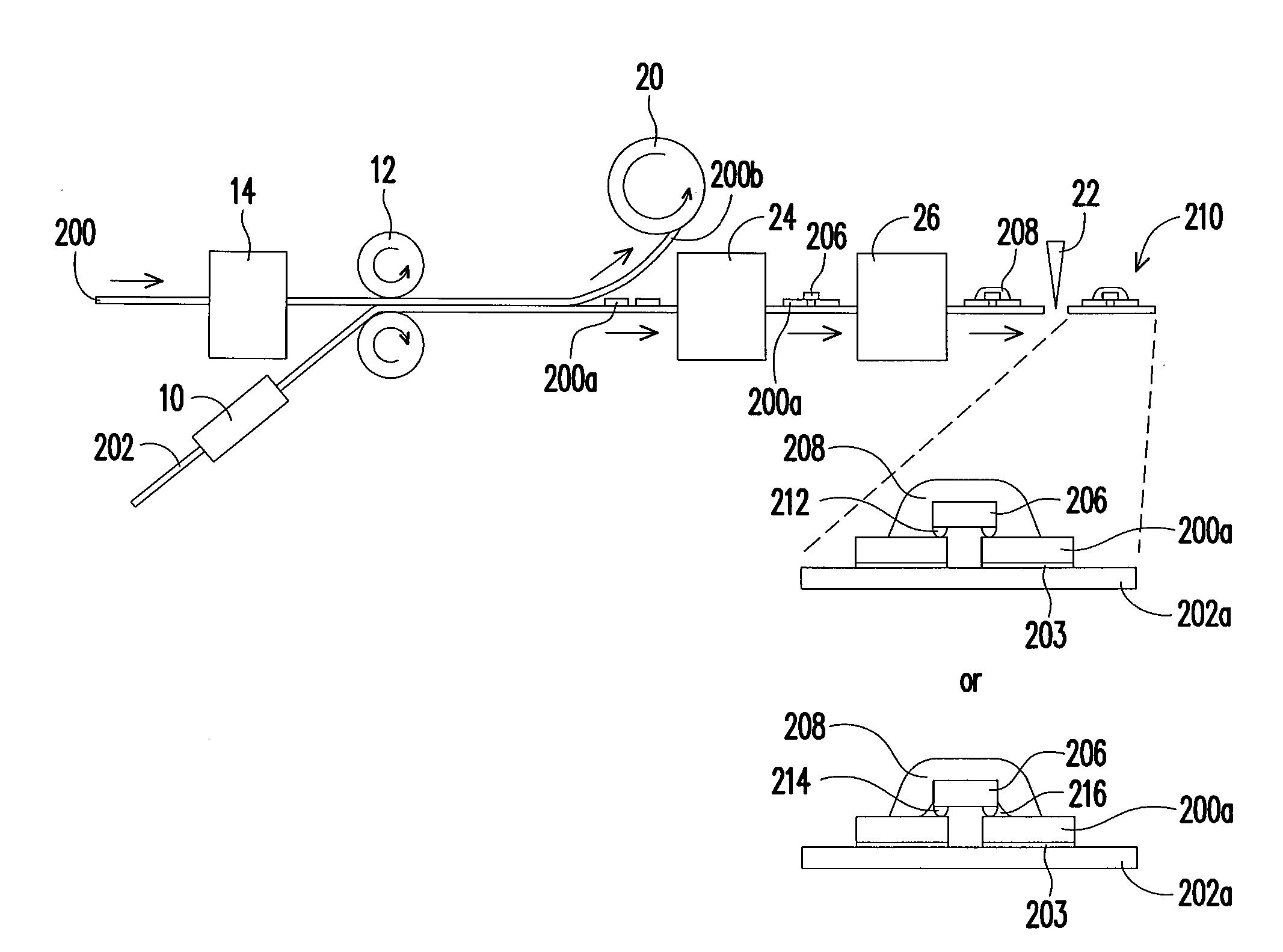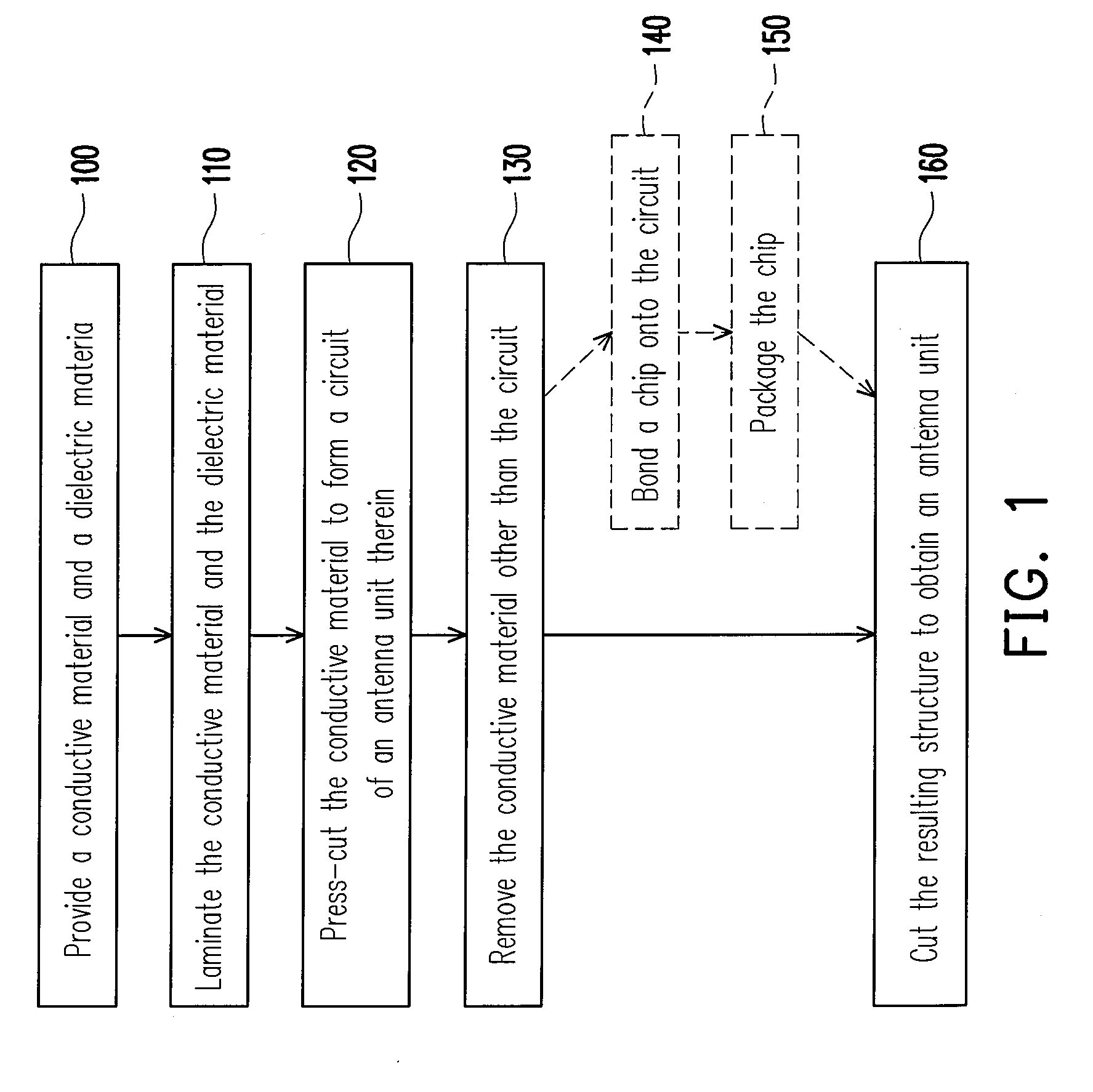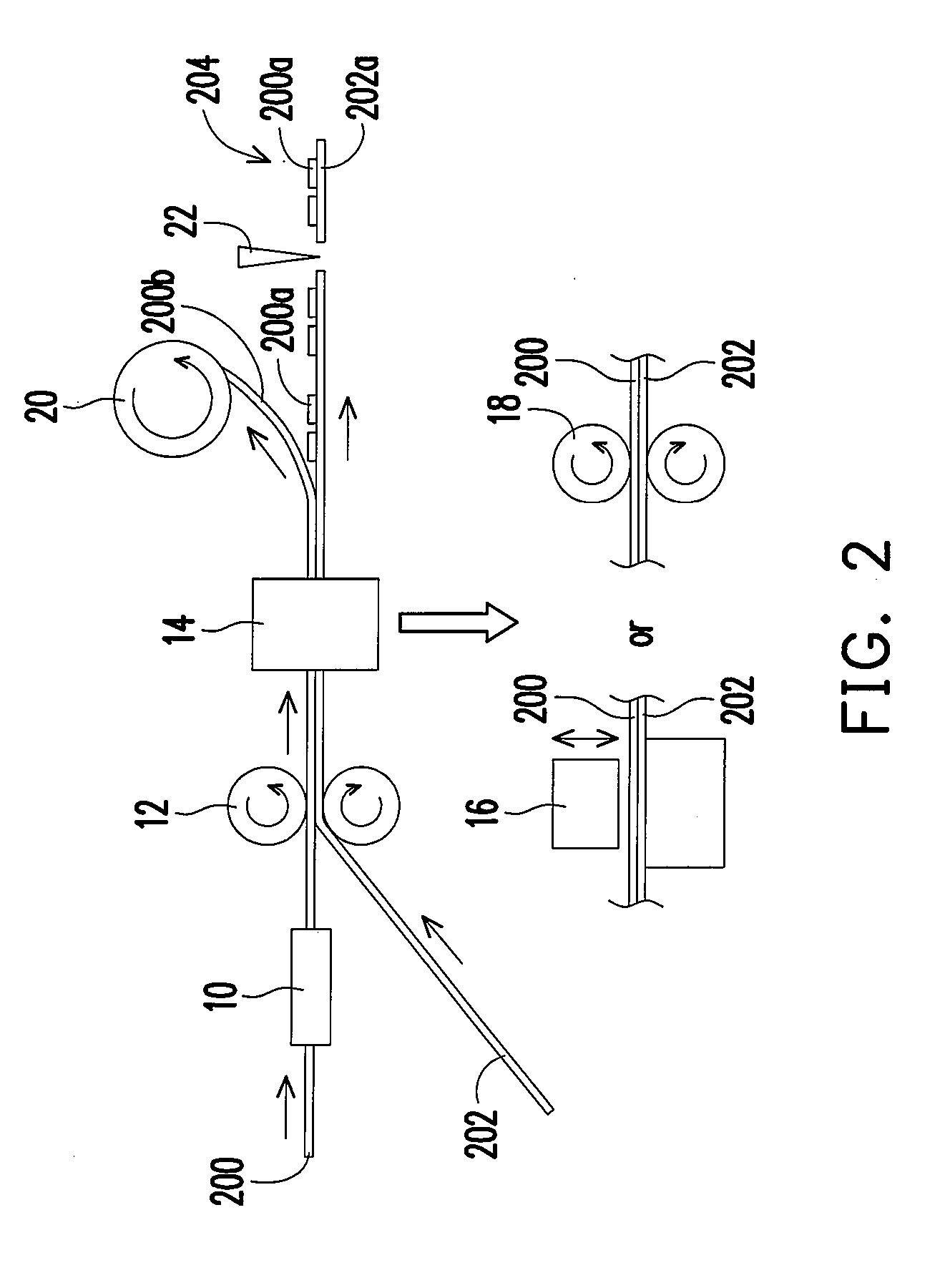Method for fabricating antenna units
a technology of antenna units and fabrication methods, which is applied in the manufacture of printed circuits, waveguide devices, printed electric components, etc., can solve the problems of time-consuming and expensive methods, bringing the product a relatively large weight, and a relatively high cost, so as to achieve low cost, low cost, and high efficiency.
- Summary
- Abstract
- Description
- Claims
- Application Information
AI Technical Summary
Benefits of technology
Problems solved by technology
Method used
Image
Examples
first embodiment
[0021]FIG. 1 is a flow chart illustrating the fabrication of an antenna unit in a method of fabricating antenna units according to the first embodiment of this invention. By establishing a continuous processing mechanism of multiple antenna units based on the steps of the fabrication of one antenna unit, multiple antenna units can be fabricated continuously. FIGS. 2 and 3 illustrate two examples of such a mechanism respectively.
[0022]Referring to FIGS. 1 and 2, a conductive material 200 and a dielectric material 202 are provided (step 100) in a continuous manner. Each of the materials 200 and 202 is preferably in the form of a contiguous film or tape, which may be stored in the form of a roll before being provided for the convenience of storage and continuous use.
[0023]Specifically, the conductive material can be a film of a metal or a metal alloy, or an insulating film coated with a metal or a metal alloy. The metal or metal alloy may include at least one material selected from the...
second embodiment
[0033]FIG. 4 is a flow chart illustrating the fabrication of an antenna unit in a method of fabricating antenna units according to the second embodiment of this invention. The second embodiment is different from the first embodiment in that the order of the lamination operation (420) and press-cutting operation (410) is reversed. The steps 400, 430, 440, 450 and 460 are similar to the steps 100, 130, 140, 150 and 160, respectively, and are therefore not described again. FIGS. 5 and 6 show two examples of such a method of fabricating antenna units. Since FIG. 5 / 6 is different from FIG. 2 / 3 merely in that the press-cutting means 14 is disposed before rather than after the two opposite rollers 12, the details of the operations corresponding to the steps 400-460 are similar to those of the operations corresponding to the steps 100-160 that have been mentioned in the first embodiment and are therefore not described again.
[0034]Nevertheless, in the second embodiment where the conductive m...
PUM
| Property | Measurement | Unit |
|---|---|---|
| conductive | aaaaa | aaaaa |
| insulating | aaaaa | aaaaa |
| dielectric | aaaaa | aaaaa |
Abstract
Description
Claims
Application Information
 Login to View More
Login to View More - R&D
- Intellectual Property
- Life Sciences
- Materials
- Tech Scout
- Unparalleled Data Quality
- Higher Quality Content
- 60% Fewer Hallucinations
Browse by: Latest US Patents, China's latest patents, Technical Efficacy Thesaurus, Application Domain, Technology Topic, Popular Technical Reports.
© 2025 PatSnap. All rights reserved.Legal|Privacy policy|Modern Slavery Act Transparency Statement|Sitemap|About US| Contact US: help@patsnap.com



